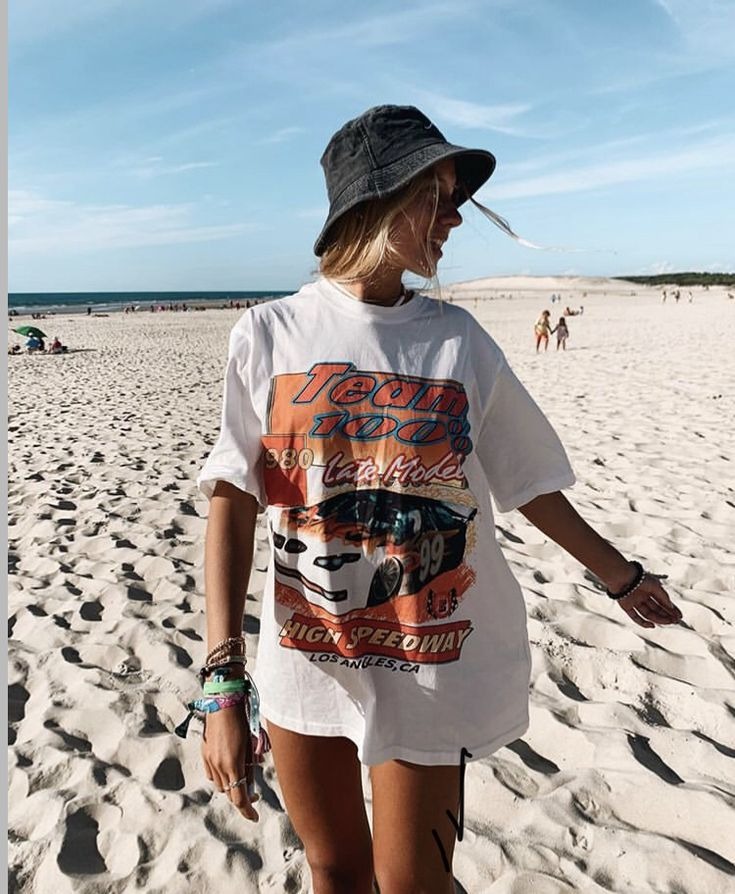Introduction
Few garments command as much enduring affection and cultural significance as the t-shirt. Its deceptively simple form—a knit torso with short sleeves and a round neckline—belies a profound capacity to reflect technological advances, social transformations, artistic endeavors, and global economic shifts. What began as a humble underlayer has, over more than a century, become a symbol of comfort and self-expression, a billboard for beliefs and aesthetics, and a testing ground for innovations both material and digital. In this extended exploration, we will embark on a comprehensive journey through the t-shirt’s origins, charting every pivotal shift in its trajectory and examining the manifold dimensions—ethical, psychological, economic, and technological—that will shape its future.
Origins and Early Developments
The genesis of the t-shirt can be traced to late nineteenth-century Europe and North America, where industrial workers labored in overheated factories and mines. The stiff, layered garments inherited from previous eras proved impractical under such conditions, spurring tailors to cut away collars and cuffs, and to experiment with soft-cotton jersey. These early pull-over shirts offered unparalleled breathability and ease of movement, but remained hidden beneath waistcoats and outer shirts, serving purely functional roles. The rapid expansion of circular knitting machines around 1900 enabled mass production of these jerseys, and garment makers began refining seam placements and pattern shapes to reduce bulk. Although still considered an undergarment, the prototype of the modern t-shirt was firmly established: a simple, collarless knit with raglan or set-in sleeves, intended to deliver maximum comfort with minimal structure.
Wartime Adoption and Civilian Transition
The First World War marked the t-shirt’s debut into widespread use. Naval commanders, confronting the sweltering heat of tropical stations, issued short-sleeved undershirts to sailors in lieu of the cumbersome wool uniforms of old. The jersey knit dried quickly after washings at sea, and its pale color reflected sunlight, reducing heat absorption. Following the conflict, returning servicemen continued wearing their undershirts as standalone garments, gradually bringing them into civilian wardrobes. During the Second World War, rationing and military supply needs further cemented the t-shirt’s presence: armed forces across land, sea, and air adopted cotton blends designed for moisture management, and surplus stocks filtered into postwar markets. What had begun as a utilitarian underlayer quietly emerged as an everyday staple for workers, laborers, and eventually anyone seeking a comfortable alternative to starched cotton and wool.
Rise of Graphic Expression
The economic boom of the postwar era and the rise of consumer advertising propelled the t-shirt into new terrain. Soda companies, local businesses, and sporting clubs recognized the shirt’s potential as a walking billboard, commissioning simple screen-printed logos and slogans. By the 1950s, print shops in major cities churned out hundreds of thousands of blank shirts adorned with brand names and promotional messages. The social revolutions of the 1960s and 1970s catalyzed further transformation: civil rights activists, environmental campaigners, and anti-war protesters embraced the t-shirt as a mobile canvas for dissenting messages. Hand-screened slogans like “Make Love, Not War” and “Black Power” spread rapidly across college campuses and music festivals, turning each shirt into both statement and solidarity emblem. Meanwhile, musicians and record labels commissioned tour shirts that bore psychedelic album art and concert dates, forging a new link between merchandise and fandom that persists to this day.
Cultural Resonance and Subcultural Adoption
As the t-shirt’s popularity soared, various subcultures adopted and adapted it to articulate distinct identities. Surf communities on California’s coast developed bold, illustrative prints evoking waves and palm trees, while Hawaiian designers incorporated native flora into their patterns. In the urban crucibles of New York and London, punk rockers customized thrifted shirts with safety-pin modifications, DIY stenciled graphics, and shredded cuts, communicating an anti-establishment defiance. Skateboarders favored oversized silhouettes and dark, graffiti-inspired imagery, reflecting the sport’s street-level origins. Hip-hop culture in the 1980s and 1990s advanced logo-centric styles, elevating brand names like FUBU and Karl Kani into markers of status and collective identity. High fashion, too, recognized the t-shirt’s malleability: luxury houses released limited-edition pieces featuring artisanal prints, premium fabrics, and collaboration with streetwear labels, driving resale prices into the hundreds and even thousands of dollars.
Technical Innovations in Materials and Construction
Beneath the visible surface, a quiet revolution in textile science and garment engineering has continuously reshaped the t-shirt. Originally woven on circular looms into simple tubes, jerseys today may be crafted as seamless garments, knitted to precise body measurements from a single yarn strand. Long-staple cottons—such as pima and supima—offer softer touch and enhanced strength, while blends incorporating lyocell, modal, and bamboo viscose provide superior moisture management and antibacterial properties. High-definition digital printing, employing water-based inks with low environmental impact, achieves photo-realistic gradients and infinite color palettes. Ultrasonic bonding and laser-cutting minimize thread waste and produce clean, fray-resistant edges. Furthermore, advances in 3D body scanning and algorithmic pattern generation herald an era of made-to-measure production, potentially supplanting the traditional small-to-XXL size schema with fully personalized fits.
Global Variations and Regional Styles
Despite the t-shirt’s universal silhouette, regional cultures have infused it with distinct aesthetics and techniques. In West Africa, for instance, vibrant wax prints and batiks find expression on t-shirt panels, merging ancestral textile traditions with modern cut lines. South Asia’s block-printing artisans layer natural dyes and intricate motifs—floral, geometric, or mythological—onto both cotton and linen blends, creating shirts that celebrate local heritage. Japanese designers apply concepts of wabi-sabi—embracing imperfection—through indigo shibori tie-dye, subtle distressing, and asymmetrical stitching that challenge Western notions of uniformity. Scandinavian minimalists strip the garment to its essence, favoring organic linen-cotton fabrics in muted tones and emphasizing form and drape over graphic embellishment. From Buenos Aires’s street-art-inspired stencils to Istanbul’s calligraphic script prints, the t-shirt remains a dynamic canvas for cultural storytelling.
Economic Dimensions and Supply Chain Dynamics
The global market for t-shirts exceeds one hundred billion dollars annually, with production concentrated in low-cost manufacturing hubs across Southeast Asia, South Asia, and Central America. Factories equipped with automated knitting, cutting, and sewing lines can produce tens of thousands of units per day, yet this efficiency often comes at the expense of transparency and labor equity. Brand conglomerates manage complex logistics networks, balancing just-in-time inventory models against seasonal demand. Fluctuating raw-material costs—especially for cotton futures—intersect with geopolitical factors, prompting some companies to near-shore production to Latin America or Eastern Europe. E-commerce and direct-to-consumer platforms have emerged as disruptive forces, allowing smaller brands to bypass traditional retail channels while offering consumers custom design tools and rapid fulfillment.
Ethical Imperatives and Environmental Stewardship
Amid mounting concerns over water usage, chemical pollution, and garment waste, the t-shirt has become emblematic of fast-fashion’s unsustainable trajectory. Conventional cotton cultivation consumes vast quantities of water and requires heavy pesticide use. Dyeing and finishing facilities discharge toxic effluents into local waterways, affecting ecosystems and communities. On the consumption side, the average t-shirt is worn fewer than twenty times before disposal, contributing to landfill overflows and incineration emissions. In response, activists and forward-thinking brands champion regenerative agriculture—rotating cotton fields with cover crops to restore soil health—and closed-loop water systems that recycle processing effluents. Certifications like Fair Trade and Global Organic Textile Standard provide frameworks for ethical sourcing, while take-back and upcycling programs aim to extend garment lifespans. Yet widespread adoption of these practices hinges on consumer willingness to embrace higher price points and to participate in garment returns and recycling initiatives.
Customization, Co-Creation, and the Maker Movement
The democratization of printing and fabrication technologies has empowered individuals and small collectives to manufacture their own t-shirt designs on demand. Desktop DTG (direct-to-garment) printers enable home-based entrepreneurs to produce intricate, full-color graphics without minimum order quantities. Local screen-printing co-operatives offer shared access to equipment and teach artisanal techniques—discharge printing, plastisol curing, and specialty inks—revitalizing hands-on craftsmanship. Online platforms provide real-time 3D mockups, allowing customers to experiment with typography, color palettes, and imagery before committing to a print run. From community fundraisers to street-team promotions, bespoke t-shirt campaigns foster intimate connections between creators and audiences, subverting mass-market production norms and reinforcing the garment’s identity as a vehicle for personal storytelling.
Psychological and Sociological Dimensions
Psychologists recognize clothing as a potent influence on mood, cognition, and social perception. The t-shirt, positioned so close to the skin, can feel particularly “authentic,” aligning outward appearance with inner identity. Research in social psychology indicates that wearing a shirt bearing a cause logo can heighten feelings of group cohesion and personal efficacy. In workplace studies, employees donning branded company tees report stronger team solidarity, while participants in protest movements experience amplified empowerment when decked out in matching graphic shirts. Celebrity endorsements and influencer culture further amplify these effects: fans who wear artist merchandise report increased self-esteem and perceived closeness to their idols. The t-shirt thus operates not merely as apparel but as a psychological conduit linking individual expression to collective experience.
The Digital and Virtual Frontier
As life increasingly migrates online, the t-shirt has followed suit into virtual realms. Video-game avatars don branded tees, blending real-world logos with in-game aesthetics. Fashion brands experiment with non-fungible tokens (NFTs) tied to limited-edition digital shirt designs, granting owners exclusive access to both digital wearables and corresponding physical garments. Augmented reality (AR) filters enable shoppers to “try on” virtual shirts via smartphone cameras, while virtual pop-up shops host drop events accessible to global audiences. In these nascent metaverse environments, scarcity models—limited-edition virtual tee releases—mirror streetwear hype cycles, fostering digital collectors’ markets. As blockchain-based provenance tracking matures, consumers may soon verify every step of a shirt’s lifecycle—from seed to stitch—via immutable ledgers, bridging gaps between physical production and digital assurance.
Emerging Technologies and the Shirt of Tomorrow
Looking ahead, sensor-embedded smart textiles promise to transform the t-shirt into an active interface with our bodies and surroundings. Conductive yarns woven into cotton blends could power haptic feedback, monitor heart rate, or adapt thermal properties in response to ambient conditions. Photochromic and thermochromic inks may enable graphics that shift color with sunlight or temperature, turning each shirt into a dynamic piece of living art. Biotechnology advances portend lab-grown cellulose fibers that replicate cotton’s hand feel while bypassing agricultural land use. Robotics and additive manufacturing in microfactories could decentralize production, enabling neighborhood-scale garment hubs that drastically cut transportation emissions. Together, these innovations point toward a future in which the t-shirt is not merely worn but interacts, informs, and evolves.
Challenges and Opportunities
Despite the promise of these breakthroughs, multiple challenges lie ahead. Ensuring that smart textile innovations are accessible and secure will require robust industry standards and user privacy safeguards. Scaling sustainable materials without prohibitive cost increases demands continued research into low-impact manufacturing and supply chain transparency. Shifting consumer mindsets away from disposability toward quality stewardship hinges on widespread education and incentive structures—perhaps through take-back rebates or loyalty programs for responsible disposal. Policymakers must grapple with regulations on chemical use, waste diversion, and carbon reporting to level the playing field for ethical brands. At the same time, cross-sector collaboration among technologists, designers, farmers, and activists can catalyze systemic change, transforming the t-shirt from fast-fashion culprit into exemplar of a circular, equitable apparel economy.
Conclusion
The t-shirt’s remarkable journey—from unstated undergarment to the forefront of cultural, technological, and environmental discourse—speaks to its unique capacity for adaptation and reinvention. Its straightforward form has served as a canvas for art and activism, a test bed for material science, and a fulcrum for global economic debate. As we stand poised at the threshold of new frontiers—smart textiles, digital avatars, regenerative agriculture—the t-shirt remains a powerful symbol of human ingenuity and aspiration. In every seam and pixel, it tells a story of where we have been and where we might yet go, embodying the evolving dialogue between comfort, creativity, and conscience that shapes our shared future




Leave a comment